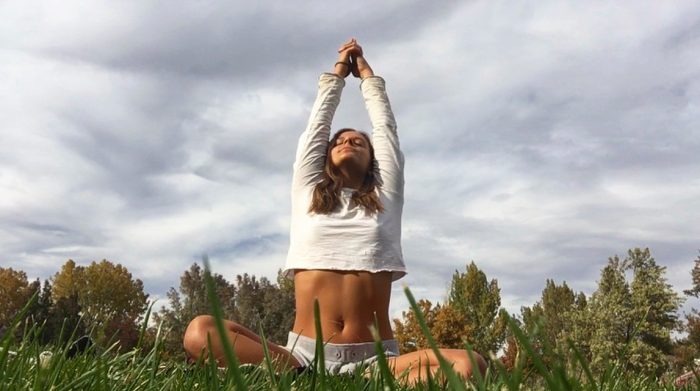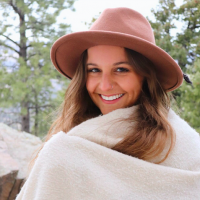I am not a naturally flexible person. I never have been. I never will be.
After nearly nine years of practicing yoga, I do consider myself flexible, but it has taken nine years of practice to get here—and I still can’t do the splits.
When I first started practicing yoga asana, I frequently asked myself, “Will I ever be that flexible?” I used to look up to the more “advanced” practitioners. I desired to be like them. I longed to be able to fully fold forward without bending my knees, to move gracefully from one arm balance to another, and to glide into the splits like it didn’t hurt like hell.
I still haven’t gotten there. And thankfully, I no longer crave to get there (because I’ve finally learned to accept where I am now—and enjoy it!). Ironically, as soon as I let go of the idea that some poses were more advanced than others—and reaching those poses would make me “better”—my body loosened up. I could finally feel myself relax and melt easier into certain poses because I no longer believed the lie that one pose was better than the other.
The level of difficulty of a pose for one person is vastly different for another person. For many people, Savasana feels harder than Headstand, and Downward-facing Dog is easier than Child’s Pose.
But why did I ever believe that some poses were better than others? And why did I believe that achieving the more “advanced” version of a pose would make me better at yoga?
Language.
The language we use is so important—on and off the mat. When we use language like “the more advanced version of the pose” or “the peak posture” or “the fullest expression of the pose” when teaching, we are implying that reaching those advanced, fully expressed, peak postures is the goal.
But what happens when we physically can’t reach the “peak posture” of class? And what happens when we practice yoga for nine years and we still can’t reach the fullest expression of a pose? We might feel discouraged. We might feel like we’re not enough. We might feel shame. And we might hurt ourselves if we push ourselves beyond our limits.
And this is why it is so important to stop using hierarchal language in yoga (and in life!). It’s shame-inducing, it’s degrading, and it’s wrong. There is no right way to practice yoga asana and we need to make sure we aren’t creating the illusion that there is. And a powerful way to do this is to become mindful of the language we are using and recognize how it might affect others (and ourselves).
So, in case you need the reminder:
>> Not being able to (or not choosing to) do certain postures does not devalue your yoga practice.
>> Not being able to (or not choosing to) do certain postures does not make you less worthy.
>> There is no wrong way to practice yoga.
>> There is no right way to practice yoga.
>> However you choose to practice yoga is entirely up to you.
>> Listen to your body. What does it really need?









Read 13 comments and reply